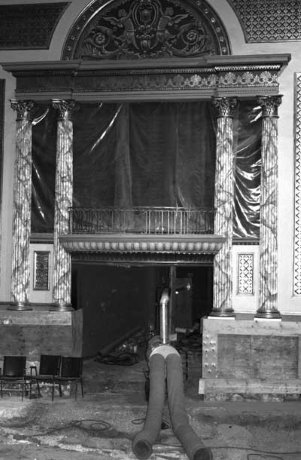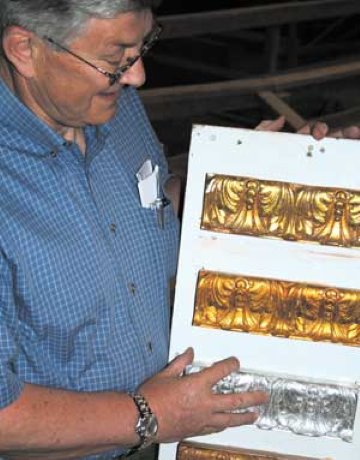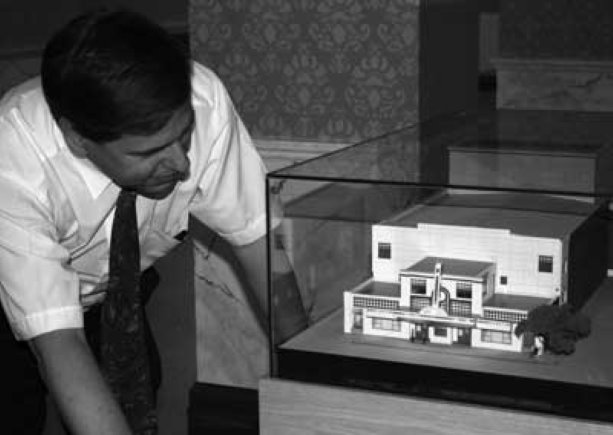Architect Peter Cook understands there’s a delicate balance in transforming Chatham, Ontario’s historic Capitol Theatre into a modern performing arts centre.
Restoration
CHATHAM
Architect Peter Cook understands there’s a delicate balance in transforming an historic theatre into a modern performing arts centre.
“There’s an enthusiasm behind this project to take the effort to restore it properly and to make a statement of the building as a representation of an historical artifact, as well as a vibrant living organism,” Cook says, of the Chatham Capitol Theatre restoration project.
Constructed in 1930, the King Street West theatre was formerly a movie house before its doors were boarded in 1992.
A couple of years later a group of concerned citizens formed The Chatham Capitol Theatre Association, sparing the theatre from demolition and beginning the restoration effort.
Virtually, the entire inside has been stripped back to its shell.
“The infrastructure is here … and there’s a tremendous sense of style to the building which has been augmented and developed further,” the architect says.
To be economically viable as a theatre, 1,200 seats are required. That meant constructing a 400-seat balcony and raft slab foundation was installed for support.
“It’s a two-foot thick slab of concrete that runs the size of the basement under the balcony.
“All the weight of the balcony and the columns are offset by the dispersion of that volume of space that the raft slab takes up,” the architect explains.
The bonus for the theatre is that it gains a large basement, which can be used as another lounge area.
Poor soil conditions, partly a result of being located about 200 metres from the Thames River, created some challenges.
Helical piles were required since the soil wasn’t solid below nine feet, Cook says.
“Trying to drive piles adjacent or near an old building of this nature runs a lot of risk. With the vibrations and impact, the brickwork can be damaged. The helical piles don’t have that risk.”
Because they’re augered down about 40 feet, he says, they can be installed inside the building as well as outside, which is what was done in this case to “support the perimeter walls of the existing building while we were excavating and putting in some of the basement space.”
A number of consultants have been involved in the project thus far, including decorative restorator David Hannivan of Toronto-based Hannivan & Company Ltd.
“Hannivan has been just tremendous in providing the artistic insights in creating a space and a quality of space that’s reflective of the style and period of the building,” Cook says.
The historic restoration of the interior is very time-consuming and would have been too costly, if not for training funds made available through Human Resources Development Canada, explains project manager Bob Fox.
YVONNE BENDO
Bob Fox, project manager of Chatham's Capitol Theatre restoration, shows how craftsmen experimented with different techniques to find the right finish.
He says there’s a shortage of skilled people to do the restoration work and through the HRDC program, Hannivan has trained more than 150 people in restorative plastering and painting.
Fundraising is a major reason for the project’s slow pace, Fox admits.
Although it’s been a work-in-progress for more than 10 years, he says another $2.8 million needs to be raised before the last phase of construction can begin.
“It’s the shortfall between the financing we have available and being able to perform the balance of the work,” Fox says.
When completed, the project will ring in at a cost of about $14 million.
The front seating area, as well as the 70-by-40 foot stage and backstage — including a fly-tower — have yet to be constructed.
Cook explains the fly-tower “is the whole high structure which allows scenery and backdrops and components of the stage performance to be flown or lifted up, out of the view of the audience; and other components to be brought in.
“It allows for quick set changes and different lighting effects to take place.”
It’s so important that Cook says some acts won’t perform in a facility that doesn’t have a fly-tower.
“For us to build a 1,200-seat theatre with a stage of this size and not to put a fly-tower on it would put the building out of balance … you would be missing something, like buying a car that only has three wheels,” Cook says.

1/2
David Hannivan of Toronto-based Hannivan & Company Ltd. was key in providing the artistic insights in creating a space and a quality of space that's reflective of the style and period of the building

2/2
Bob Fox, project manager for the restoration of Chatham's Capitol Theatre, shows how craftsmen experimented with different techniques to find the right finish.











Recent Comments
comments for this post are closed